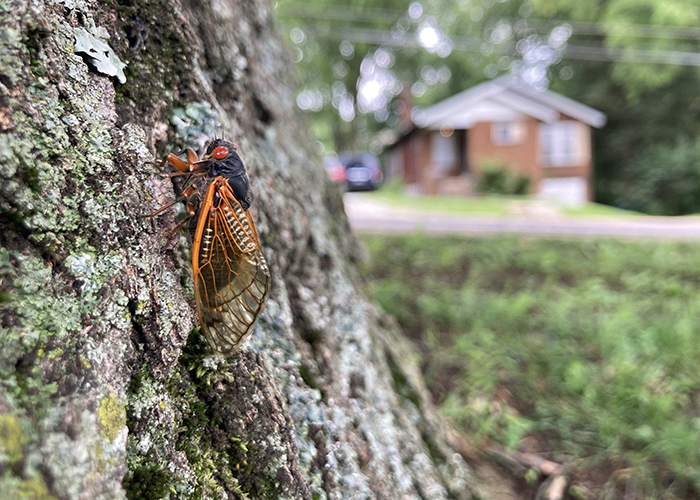 More 2024 Adventures |
St. Louis, MO → Springfield, IL 128.0 mi (206.0 km) |
 Next Day |
I’m swarming with excitement, everyone!
Something huge is happening this year! It’s something that hasn’t happened since the signing of the Louisiana Purchase in 1803 and won’t happen again until 2245. For that reason, I’m returning to St. Louis, home of the Gateway Arch, to witness an event that’s truly once in several lifetimes! To get my first glimpse, I turned my compass for adventure to historic Lafayette Park, dedicated as the city’s first public park in 1851 and considered the oldest public park west of the Mississippi!
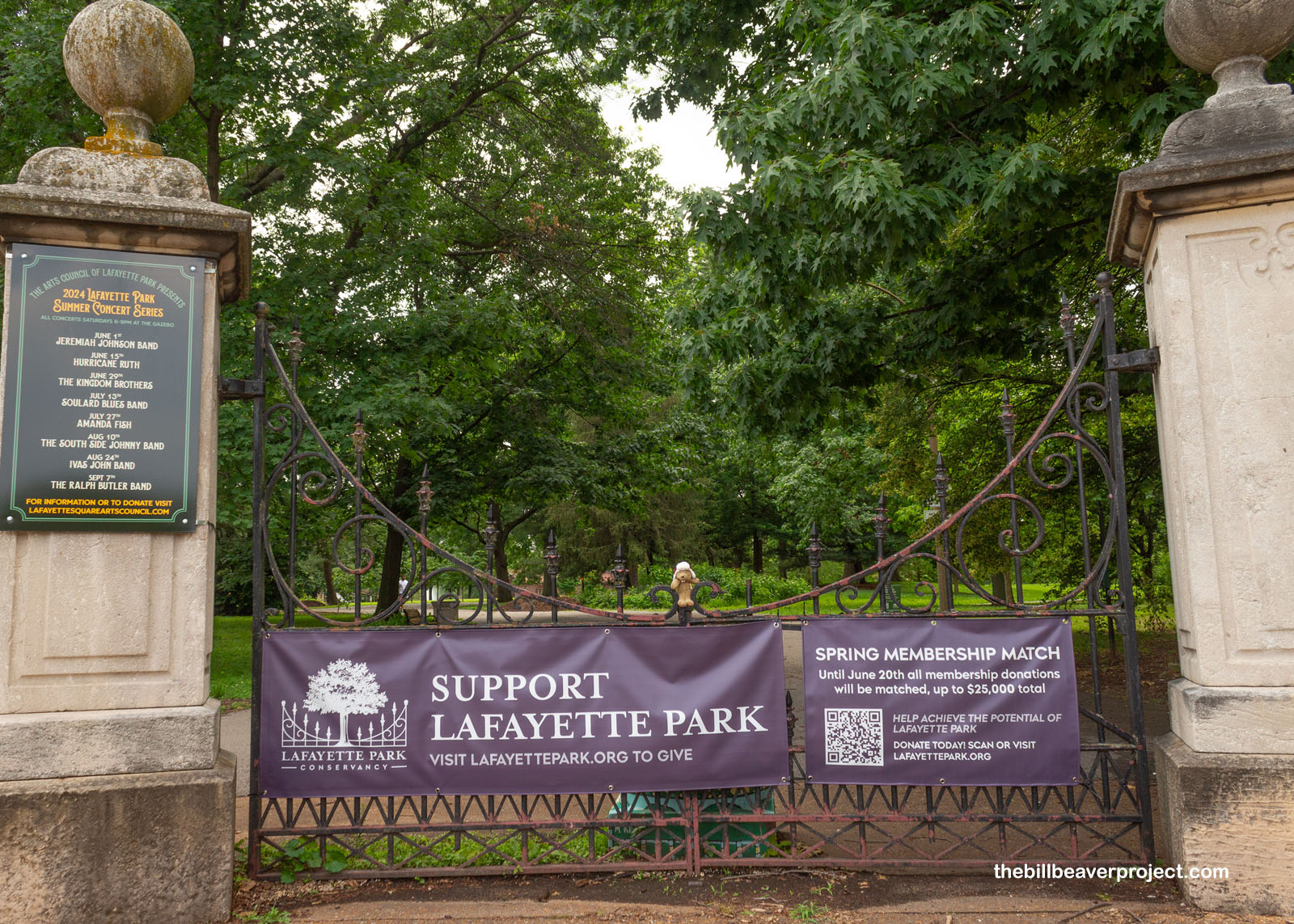 |
Lafayette Park is the centerpiece of Lafayette Square, St. Louis’ first historic district and an entire neighborhood listed on the National Register of Historic Places! It’s teeming with unique architecture, Victorian, Second Empire, German Baroque, and more, because the years after the Civil War were very prosperous for Missouri. This was St. Louis’ most fashionable neighborhood for many years!
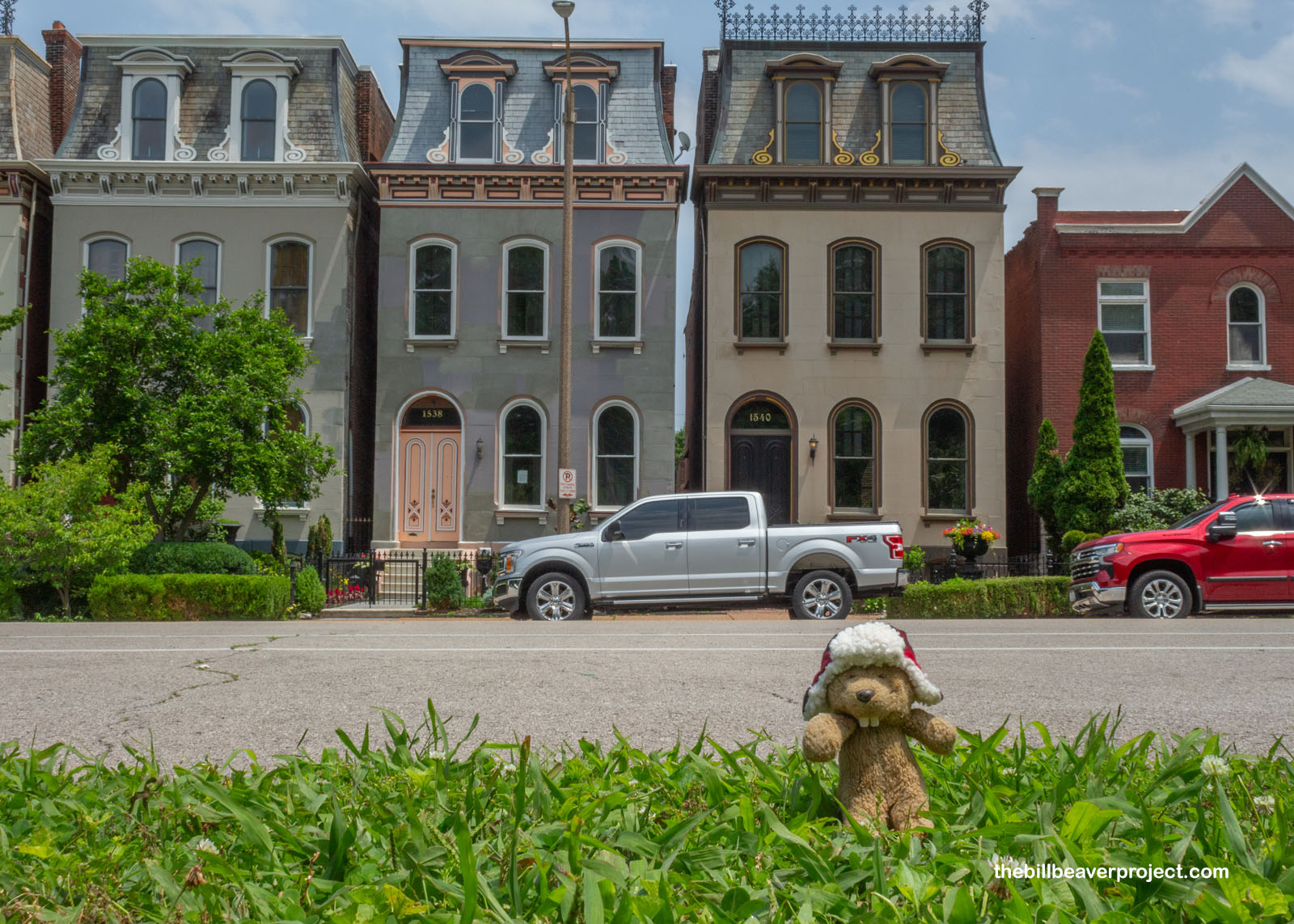 |
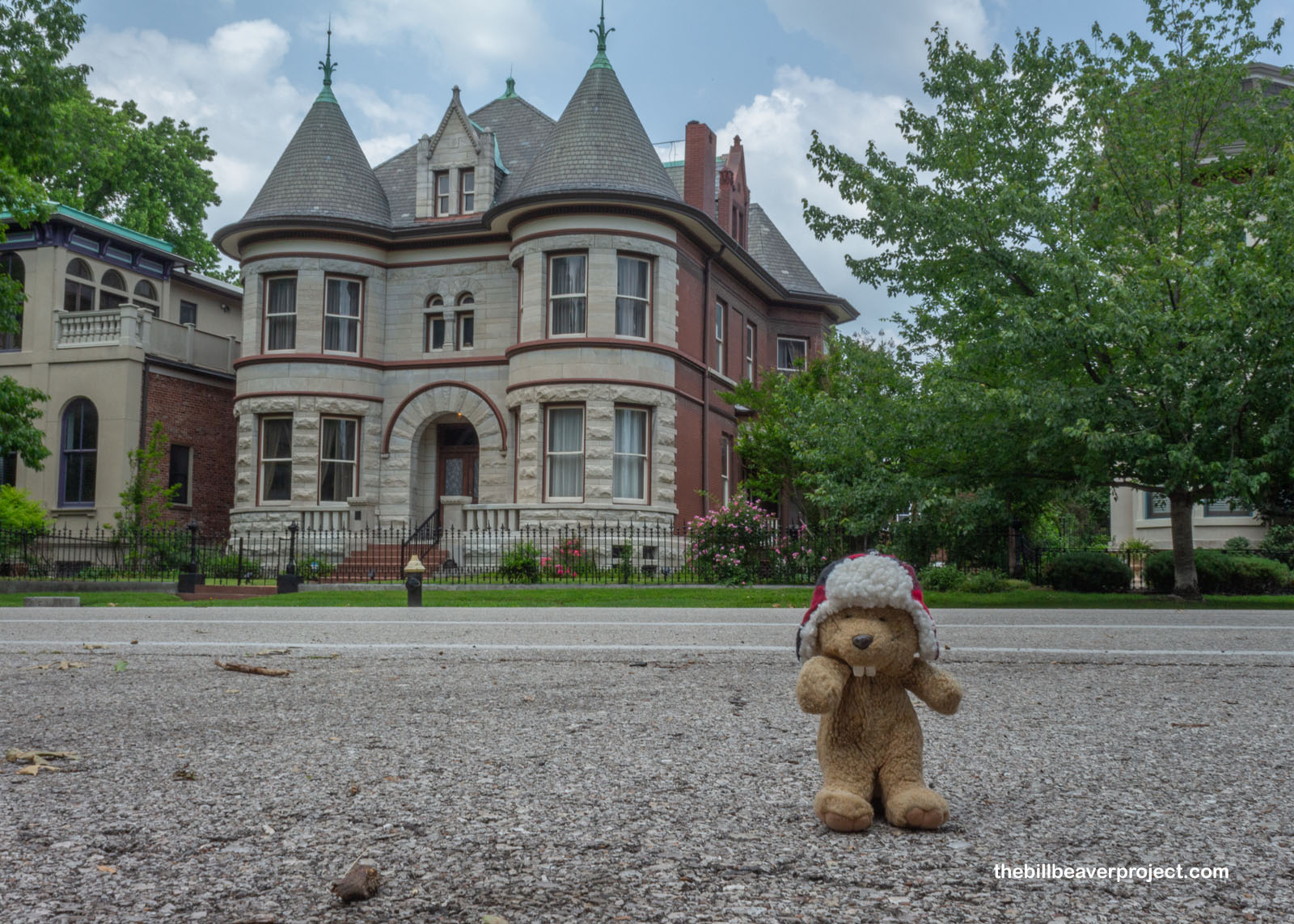 |
The park also became the city’s most popular recreation spot, with a band stand, pavilions, and a lake for swan boats! Some of the park’s features, like the old police station (now park conservancy headquarters) and the Elizabeth Cook Pavilion both date back to the late 1800s!
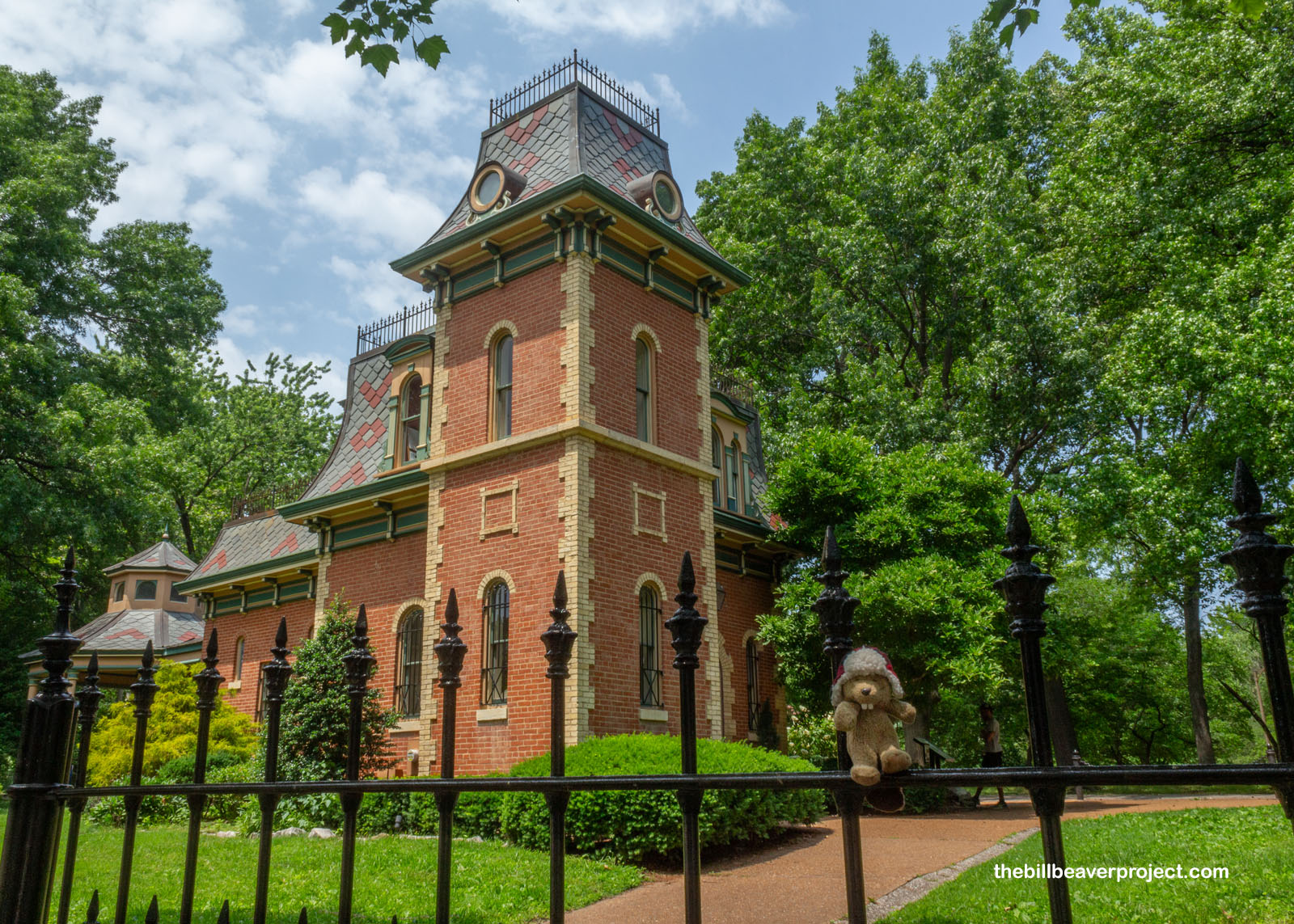 |
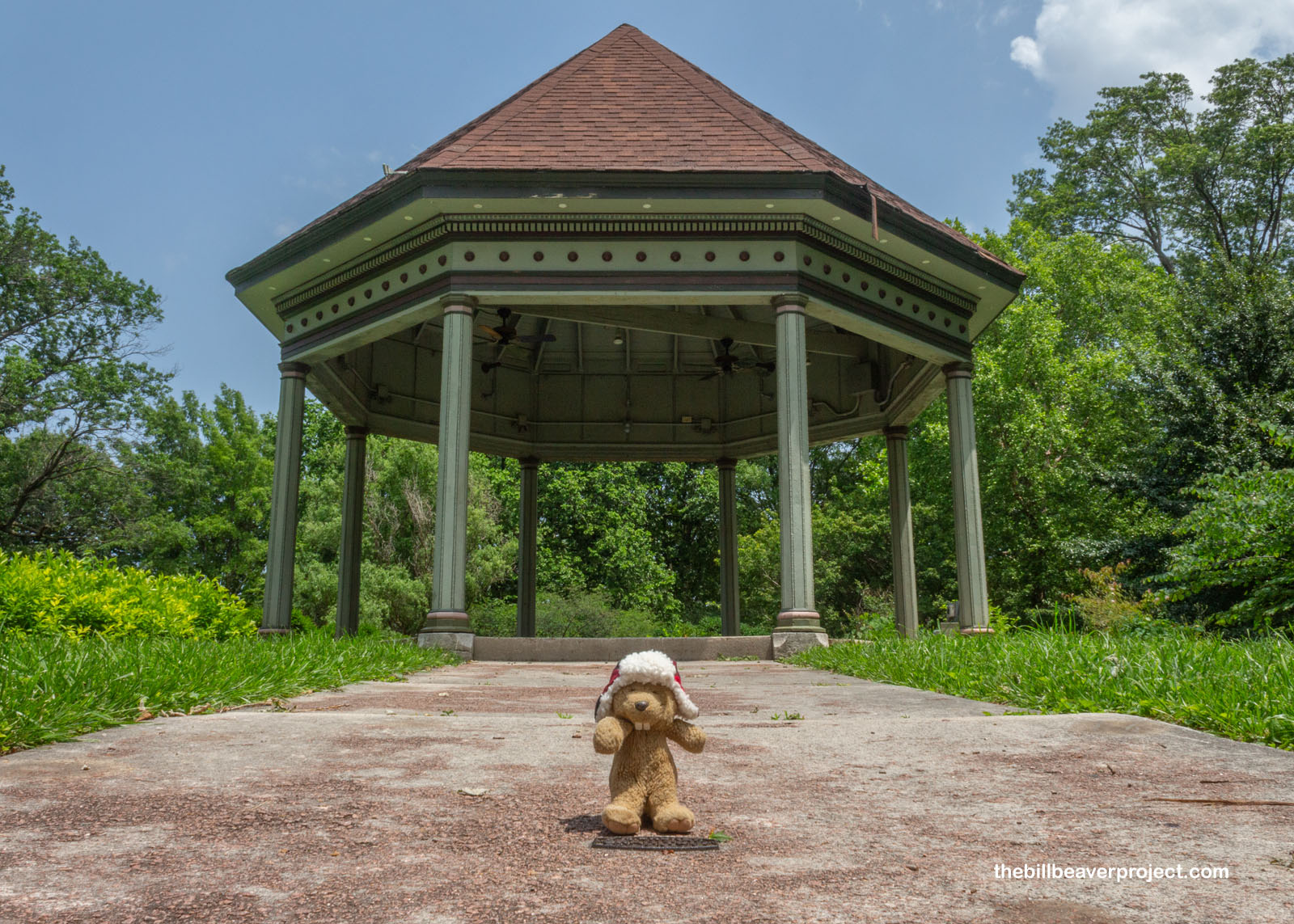 |
And this bronze statue, dedicated in 1868 was the first public monument west of the Mississippi! It was also the first public monument sculpted by a woman, Harriet Hosmer, who sculpted in Rome and cast in Berlin. The toga-clad figure is Senator Thomas Benton, one of the state’s first, a big proponent of westward expansion and a big opponent of slavery, which cost him his seat as the state grappled with the Missouri Compromise of 1850!
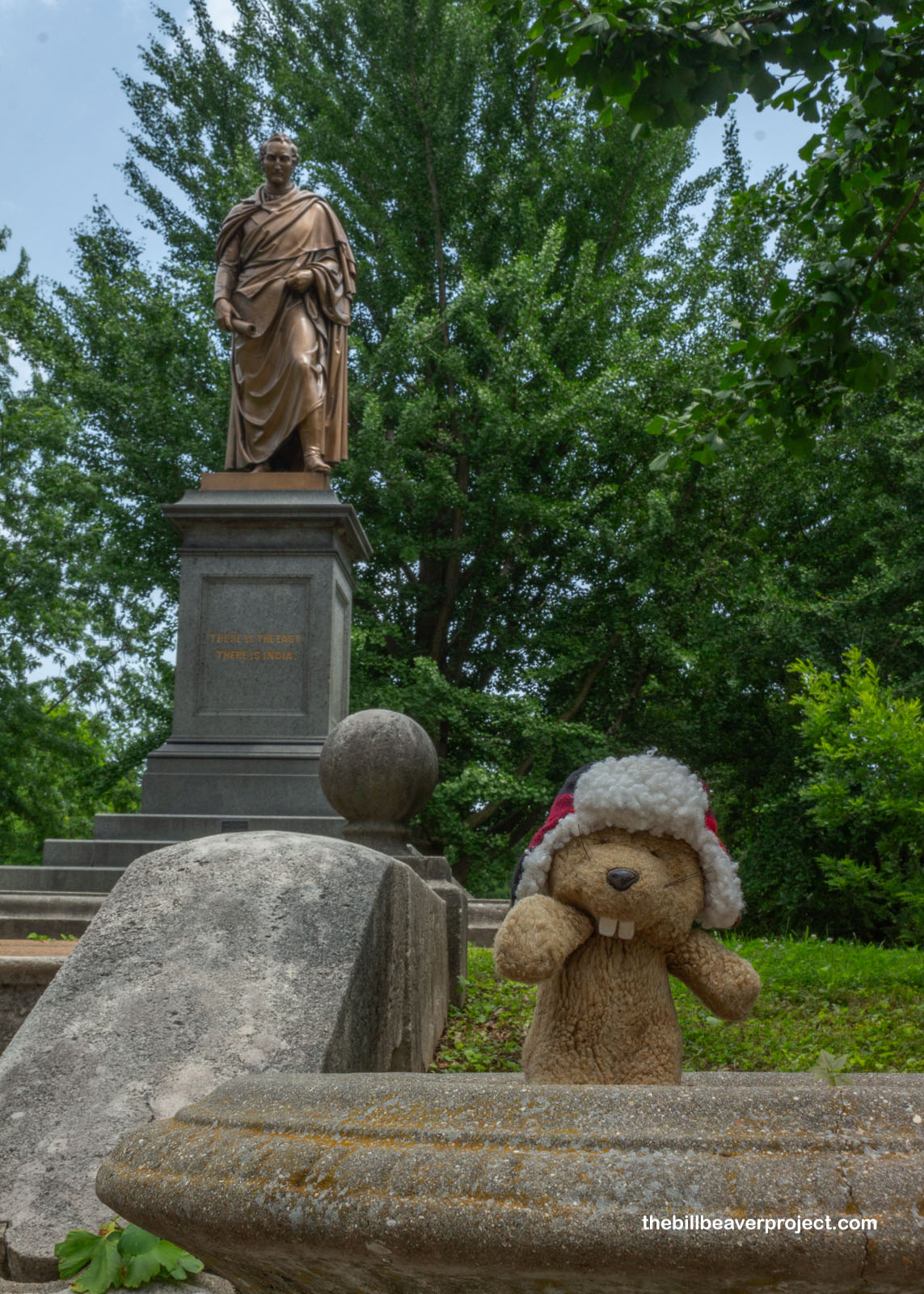 |
While Senator Benton is still standing in his original location, sadly, many of the park’s other original attractions were flattened by a sudden tornado on May 27, 1896! Its magnificent music pavilion, for instance, hosted musical performances for twenty years before it was flattened! It was rebuilt, then demolished in 1951. Today, only the original foundation, and signs about the park’s history as a training ground for Colonel Thornton Grimsley’s volunteer militia, remain! And though the skies here were bright blue today, tornado warnings were on the afternoon’s forecast!
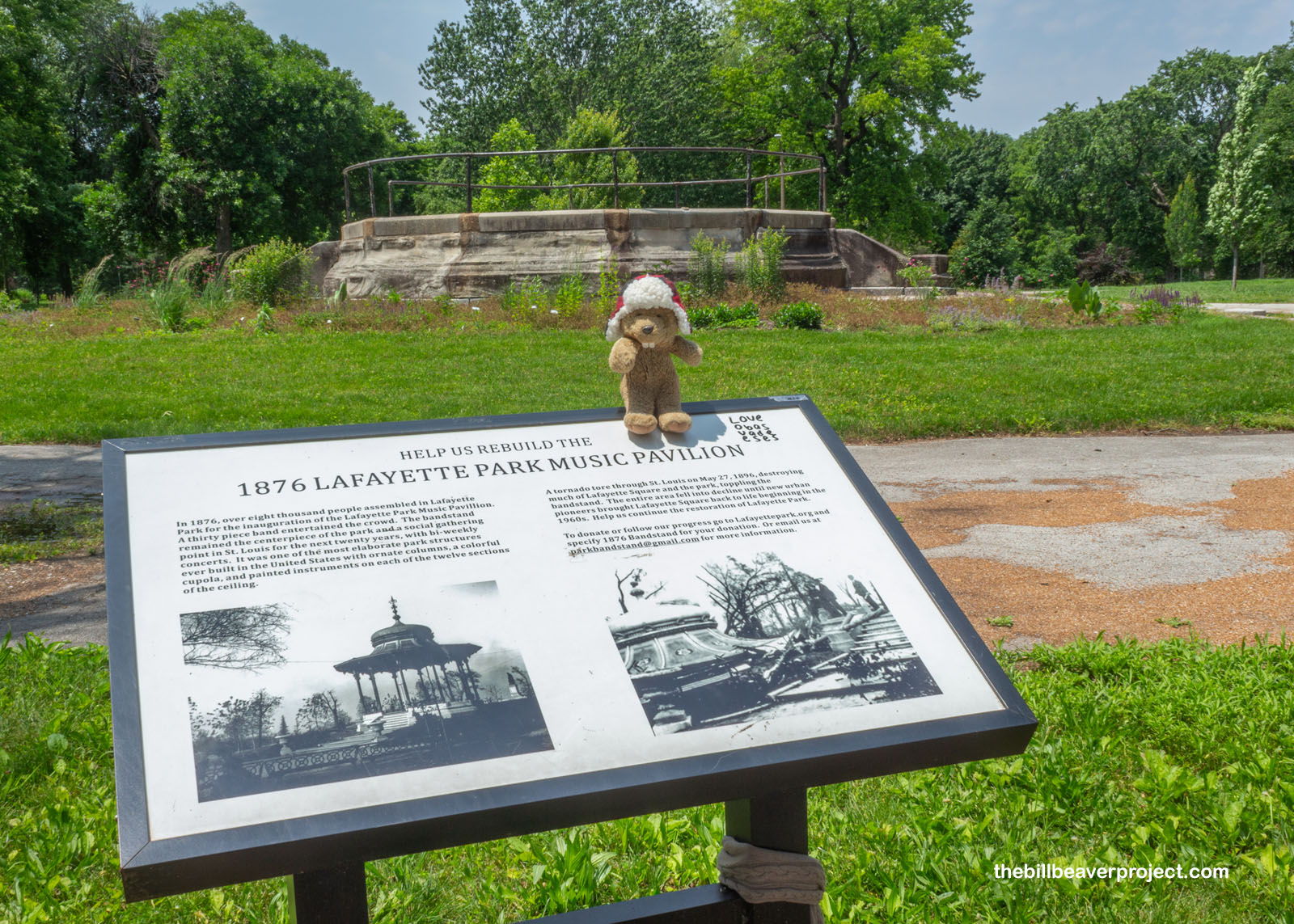 |
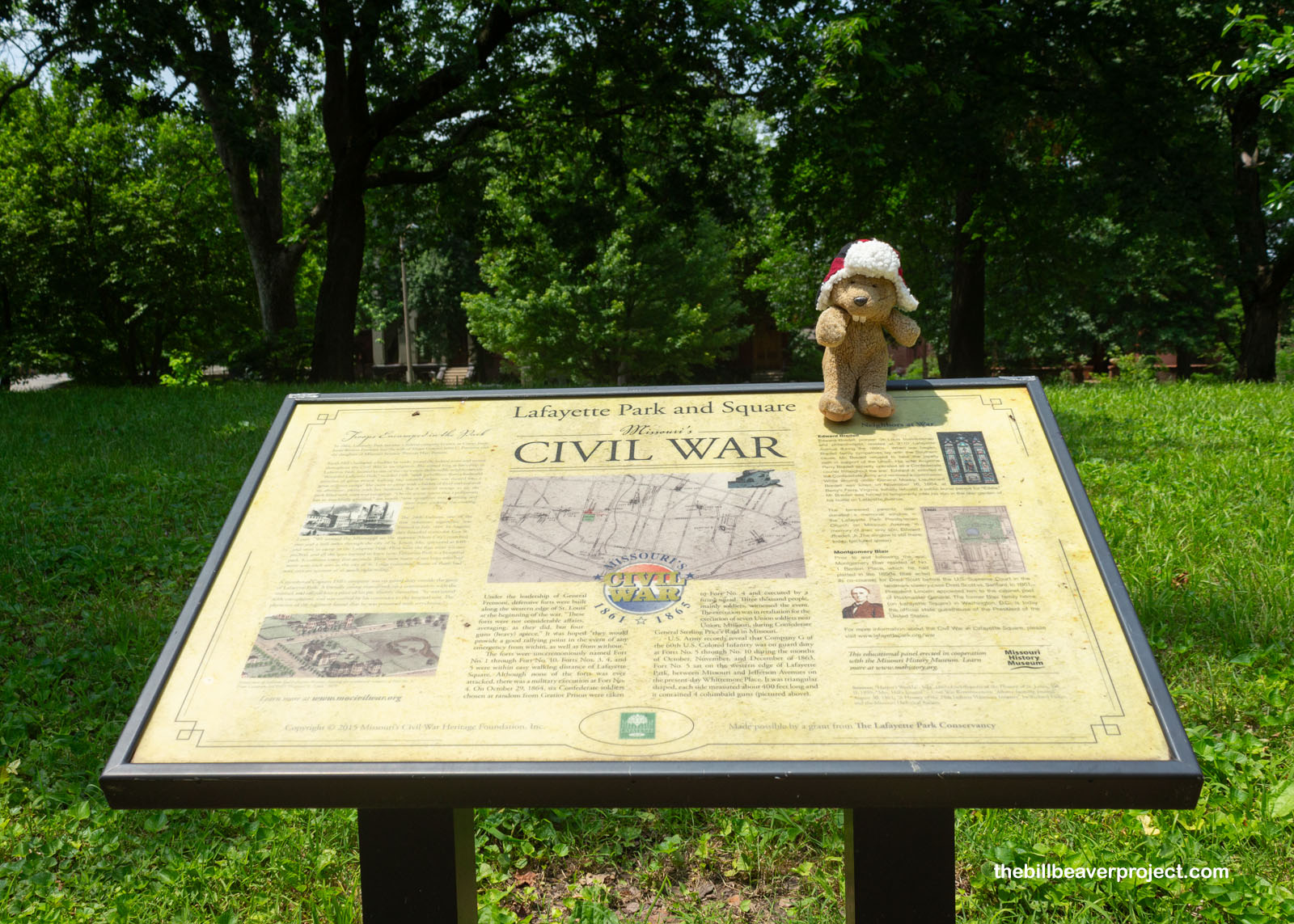 |
But the park bounced back! It wasn’t easy, and much of the neighborhood fled after the tornado, leaving the park in shambles. but because St. Louis was hosting the Louisiana Purchase Exposition in 1904, it got itself a makeover! For instance, its Rockery garden got revived with new iron bridges, one of which still stands today!
 |
 |
By now, you’re probably wondering why I keep going on about this park and its history when I promised something huge at the start of this blog! Well, just as this park was reborn after disaster, I’m here to find another symbol of resurrection. In fact, it’s a bunch of symbols, thousands, millions, maybe even billions of them!
 |
They’re cicadas! This is the year of the double-brood hatch, when the 13-year periodical cicadas of Brood XIX and the 17-year cicadas of Brood XIII emerge at the same time, the first time this has happened since 100 years before this park got its World Fair makeover! I found the first evidence of them under an oak tree, their discarded exoskeletons covering the tunnels they’d dug to the surface after spending 13 years sucking on this tree’s roots!
 |
There were exoskeletons under every oak tree I could find, piles upon piles of them! They started emerging at the start of May, coming up after 5 stages of metamorphosis to molt into their sixth as winged adults. I could hear a few of these adults buzzing high up in the trees, but I couldn’t see any near the ground. My goal on this trip was to see adults from both broods up close and personal to experience the amazing sights and sounds of what some were calling Cicadamaggedon!
 |
Only, there weren’t many to see in Lafayette Park, so I checked Reddit to see where in greater St. Louis folks were finding these cicadas. Resoundingly, folks were reporting that the Shrewsbury neighborhood was just swarming with them! So I redirected my adventure compass toward Ackert Park, and immediately, I could tell the difference!
 |
The buzzing of cicadas was unmistakable through the windows of the car, and I could see them zipping about from tree to tree. As soon as I got out to explore, my entire body started vibrating with their steady, cycling buzz! You can listen to them in the video below!
I found my first adult cicada right down by the ground! It was super pretty, deep black and bright orange with brilliant red eyes! It was also a little bug for making such a big noise! That’s because periodical cicadas are smaller than their annual counterparts! All in all, there are six species of periodical cicadas, genus Magicicada, all of which are emerging now. I couldn’t tell from looking which one this was, but I thought he or she was super pretty!
 |
This one seemed a little discombobulated. It kept trying to fly, but then it got stuck on its back in the grass. It could have been because adult cicadas only live for a few weeks after they emerge. They don’t eat; they’ll sip plant juices to stay hydrated, but the main reason these bugs have all come up this year is they’re looking for LOVE!
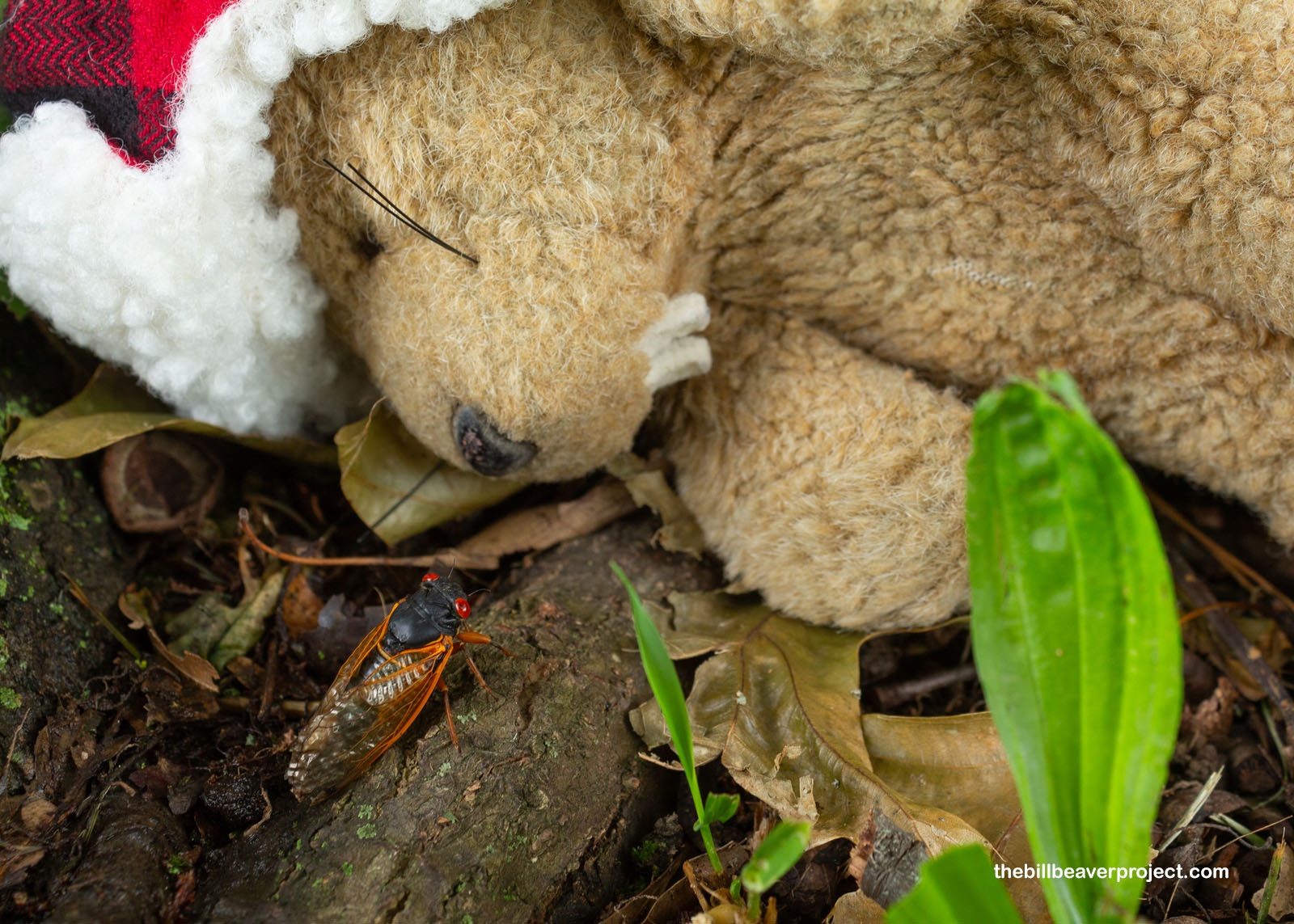 |
I tried to give this one a wing-up. After all, there were lots of dating opportunities up in the branches of these trees, and I’d hate for this one to miss out! I wasn’t quite sure if it was a boy or girl, partly because they don’t have mouth parts to self identify, and I have a hard time understanding wing buzzes, but at the end of the day, it didn’t matter. I strolled over to the loudest tree and shouted “Go get ’em!” and the cicada… fell down into the grass once again. The ants were already eating its compatriots, and I realized it was time to let nature take her course! Lots of critters eat cicadas from birds to squirrels to other bugs. Some people eat them too, but I was a week early for the scheduled cicada cooking classes!
 |
Overhead, the blue sky had begun to turn menacing, so I had to leave this tiny sampling of Brood XIX to their own devices and head north to beat the tornado warnings. Tomorrow, I’m going to dedicate a full day to seeking out Brood XIII hot spots and seeing if I can get a real wild Cicadamaggedon experience!
I’ll see-cada you then!

 More 2024 Adventures |
Total Ground Covered: 128.0 mi (206.0 km) |
 Next Day |
